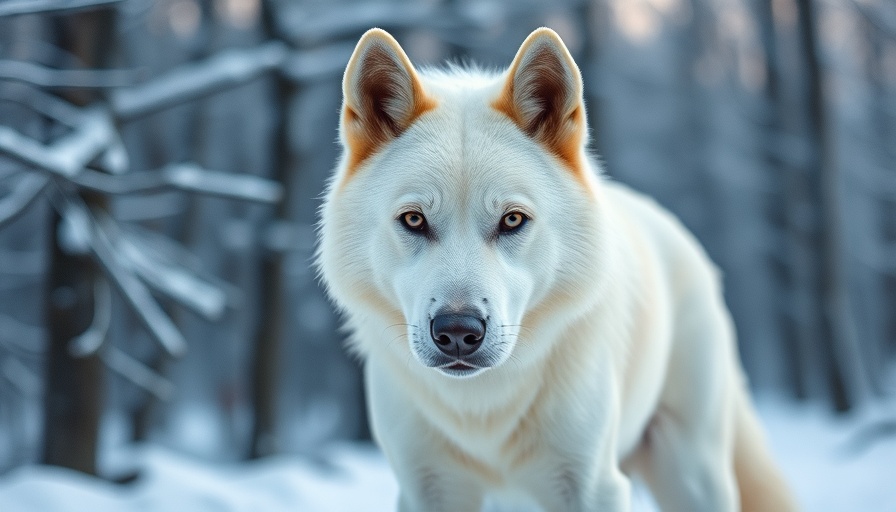
The Fascinating Return of the Dire Wolf: A Scientific Marvel
In an unprecedented move that blurs the lines of science and fiction, startup Colossal Biosciences has claimed to bring back the dire wolf, a formidable predator that walked the earth over 10,000 years ago. This bold leap into the field of de-extinction showcases not just the capabilities of genetic engineering, but also raises riveting questions about the ethical implications and future of such scientific advancements.
What Makes a Dire Wolf a Dire Wolf?
Colossal's founder Ben Lamm asserts that the wolves, identified as dire wolves, might not be direct clones from ancient DNA but rather genetically edited modern-day gray wolves. Through deliberate gene manipulation, Colossal aims to instill characteristics reminiscent of these ancient canines. The offspring, recently named Romulus, Remus, and Khaleesi, exhibit distinctive features like broad shoulders, a wider head, and robust haunches. These traits are vital indicators for scientists eager to understand not just the dire wolf's appearance, but its ecological role in prehistoric ecosystems.
De-Extinction: Science Fiction or Reality?
The idea of resurrecting extinct species was once confined to the realms of science fiction, notably epitomized by Steven Spielberg's Jurassic Park. However, the advances presented by Colossal Biosciences reflect a significant shift towards actualizing these once fantastical ideas. Instead of finding and cloning preserved DNA, Colossal's approach involves engineering the genomes of existing relatives, showcasing how biotechnology can pave avenues for re-creating lost species.
The Implications of Playing God
As we delve deeper into the realm of de-extinction, it is essential to confront the ethical questions surrounding these practices. While the scientific community often heralds such advancements as groundbreaking, concerns loom regarding ecological balance, human interference with nature, and the responsibilities that come with reviving a species. Are humans prepared to manage and sustain these animals in environments that have since evolved drastically since the Ice Age?
A Peek Into the Future
The excitement swirling around the dire wolf raises speculation about the next steps in de-extinction. With plans to produce a further total of seven to eight dire wolves, Colossal is positioning itself at the forefront of bioengineering and conservation efforts. The potential benefits could extend beyond mere entertainment value, presenting opportunities to address biodiversity loss and restore degraded ecosystems.
Educational Value Within Marketing
For marketing managers, the narrative surrounding the return of the dire wolf provides a unique case study in branding human innovation and curiosity. Crafting campaigns that resonate with the ethical and cultural significance of de-extinction can elevate corporate narratives and foster deeper connections with audiences. Educating clients and consumers about these endeavors, while embracing both the wonder and responsibility, could lead to enriched brand loyalty.
Conclusion: Our Role in the Future of Biodiversity
As Colossal Biosciences embarks on this journey of de-extinction, we are urged to reflect on humanity’s role in shaping biodiversity. By harnessing the power of genetic engineering, there is potential for advancements that could be both constructive and destructive. It is crucial for marketing professionals and the general public alike to engage in discussions about the future implications and the philosophical considerations surrounding the resurrection of long-extinct species. The time has come for us to share our voice in the conversation of life—and death—on this planet.
 Add Row
Add Row  Add
Add 




 Add Row
Add Row  Add
Add 

Write A Comment